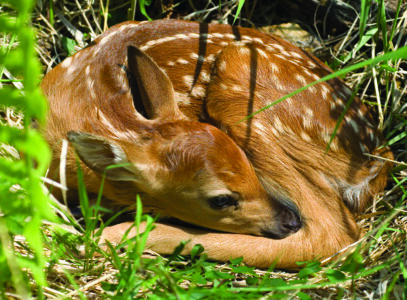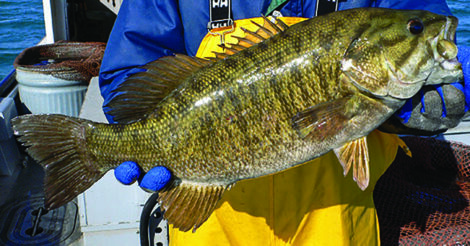Outdoors North: John Pepin
The solace of the falling rain

“Summertime and the living is easy, fishing are jumping and the cotton is high,” – Dubose Heyward, George Gershwin and Ira Gershwin
Over the past few days, autumn has begun to unfurl its final vestiges of colors and kick before its tattered curtain is torn away, and November comes down with its darkness like a guillotine. Today it’s raining steadily with the sun faintly visible, hiding behind a woolen sock of gray clouds slung low toward the ground. The air is cool and clean.
It opens my entire being up wide as I take deep breaths. This autumn air tastes good, second only to the biting crisp air of a late winter afternoon or nighttime. The rain has begun to fall more frequently over these last days of October. Its welcome moisture has let the grass green-up one last time for the season. Soft and comforting or steady and insistent, the rain is such a true blessing.
It’s a real miracle.
I stop everything for a few minutes to listen to the raindrops strike everything beneath them, including my jacket. I like to watch the drops splash into puddles. It’s a peaceful and calming scene. The combination of the cool air, cloudy skies and the gentle sound of the rain could easily lull me into a comforting sleep, if I could find a reliable place for cover – a rock overhang, a cave or the roof of an abandoned shelter.
During the long days of winter, the falling rain is one of the things I miss most. I daydream fancifully that these gentle rains today have come to bid me a fond farewell until the gray-brown springtime. I have deliberately taken time to stop here today to notice and enjoy the rain, and I am grateful for its presence.
Perhaps these showers have sensed me too and they are falling to signal that recognition. Perhaps not too, but it’s a pleasant thought anyway – which always is something to hold and cherish. If I close my eyes and try to relax as much as possible, I can hear and feel my heart beating and the blood pumping through my veins – evidence of a life being lived, at least by definition.
I sometimes think my brain and body go through a slowing down or speeding up process, not unlike the conditions expressed and represented in the natural environment as we move from one season to the next. Why should I be excluded from the natural processes taking place all around me?
I am connected to that organic world, reside within it, and therefore, it seems reasonable that I should also, in some way, conform to its change and process. The more I think about this, I think it follows true. Winter marks the slowest, most challenging time for me to get out to accomplish things outdoors. That doesn’t mean I don’t love and appreciate winter. It just marks a similar change that occurs within me that is mirrored by my natural surroundings in nature.
Springtime, likewise, is a rush and flood of energy, emotion and activity that leads into the green and golden, long days and short nights of summertime – easiest living compared to the rest of the seasons for nature and for me. Here among the trees of a northern hardwoods forest, the canopy has lost much of its summertime rain-sheltering ability, with most of its leaves now on the ground.
My footfalls don’t make a sound as I walk through the wet and colored leaves lying flat against the ground. The spectacle of these tremendous reds, golds, oranges and browns is tremendous to experience so close at hand. I will admit that autumn is the finest of the seasons to me. It’s the time of the year when I often feel the most in sync with the world happening around me. The changes occurring are becoming more pronounced with each day that passes.
A blush of robins, numbering six to eight, that had set up operations on our lawn for at least a couple of weeks, have moved on out, headed south for the wintertime. The group included several young birds that had likely been from a second brood hatched this summer. There was also at least one adult male and female present. They were there reliably every day, until one day they weren’t.
Just outside the back door yesterday, a lone goldfinch, its plumage washed out to a dull, fall gray, was perched for most of the afternoon within a withered stand of black-eyed Susans. She was eating the seeds from the dark-brown center of these faded flowers, which were gorgeously blooming almost all summer long.
Those maples with the hand-sized butter-yellow leaves that have been holding on for weeks now, have seemingly all decided to let go. They have tumbled to the ground in numbers far surpassing the rest of the colored leaves, at least in this forest. Upside down on the ground, the raindrops gather on these leaf undersides in distinct droplets. These leaves are some of my favorites of the season and they are well worth waiting for.
This got me to thinking about whether leaves fall to the ground in a certain succession of species or is it just a haphazard event. That notion didn’t remain in my brain for long. I concluded quickly that environmental factors, like moisture, temperature, sunlight amounts and others, would ultimately dictate when an individual tree’s leaves would fall to the ground.
If I were a tree, I think I’d prefer to hold onto my leaves for as long as I could. Perhaps trees are like this too?
I don’t know, but I am certain that trees and all kinds of things in nature possess a lot more secrets we have yet to discover about them. This goes for interrelated processes and all kinds of phenomena that remain either unquestioned or unexplained.
A crow caws as it flies away from a branch, likely announcing my presence to anything listening as far as the sound carries. On a day like today, the rain dampens the noise a bit, but it still carries a good distance. There are some blue jays joining into the caws of the crow. Juncos and wintertime birds have begun arriving in larger numbers – another signal to the ticking of nature’s clock, like the darkness falling sooner each evening.
Squirrels and chipmunks race around chasing each other, scurrying enough to still make noise in the wet leaves. I watch a chipmunk pick up a big, greenish-yellow acorn and tuck the entire thing into its mouth, making its cheeks bulge. The chipmunk looks at me, looks at the ground and then runs past me. Red squirrels are chattering loudly. They look acrobatic as they hang from oak tree branches trying to gather some acorns for themselves.
Some of the acorns missed by the chipmunks, the squirrels and other animals will be eaten by deer, either during the late fall or after the snow has arrived. I often come upon places where deer have kicked the snow away to find acorns, even when they are buried under a few inches of snow. Of course, some acorns will remain to grow into more oaks.
Down this old backwoods two-track, there isn’t much moving today beyond what I’ve described, except a few chickadees and other small birds. I think most birds don’t mind the rain, unless the wind gets wild. I have been out fishing in the rain plenty of times and seen birds all around me, even singing.
I guess they like the rain, like I do.
They will still come out to look for something to eat, just like I will not let the rain stop me from fishing for a brook trout dinner. As much as I love the summer green of the woods in this part of the world, there’s something very appealing about the woods in the rain in the fall, especially after most of the leaves have come down.
I enjoy getting better views of the landscape around me and I feel the greater visibility may expose me to wildlife encounters or other experiences I likely would have missed during the big green jungle days of late summer.
It’s a good time to find new animal trails, old nests and plenty of destinations I might like to seek out during those warmer times, like canyon depths, bluff ridges and hidden river courses. The main thing is to get out there, where the real things are happening. It’s such a comfort to turn down the noise, even for just a few minutes, breathe some fresh air, feel the raindrops and set your mind free.
There is an incredible and understated power in doing that. It’s strange to think that something so simple could be so effective, positive and restorative. It’s likely the representation of our connecting to the natural world in the most direct ways we can.
Count me in every time.
Outdoors North is a weekly column produced by the Michigan Department of Natural Resources on a wide range of topics important to those who enjoy and appreciate Michigan’s world-class natural resources of the Upper Peninsula.





